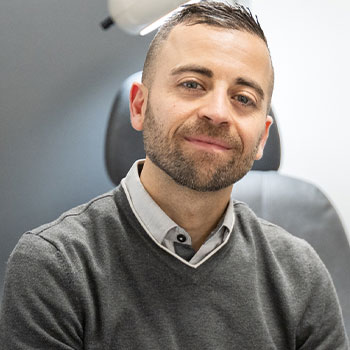Despite the critical role vision plays in our overall well-being, eye health frequently doesn’t receive the attention it deserves. Keeping up with regular eye exams is vital for early detection of potential issues and maintaining optimal vision. For individuals in Ontario, it’s important to be informed about which medical services fall under the coverage of the Ontario Health Insurance Plan (OHIP).
It’s important to note that OHIP does not provide comprehensive coverage for all eye-related services. Coverage details may vary based on several eligibility factors, primarily age.
It may be beneficial to consult with an eye care professional, such as our team at Stoney Creek Eye Care, about coverage options before scheduling an appointment.
What Is OHIP?
OHIP stands as a cornerstone of healthcare for the residents of Ontario, offering a government-funded insurance program that provides access to essential medical services. This comprehensive plan is designed to alleviate the financial burden of healthcare, covering an array of services that are crucial for maintaining health and well-being.
Understanding OHIP Coverage Fundamentals
Among the services included under OHIP, residents can expect coverage for consultations with family physicians and specialists, which are integral to the prevention, diagnosis, and treatment of various health conditions.
Hospital stays, encompassing accommodation and meals, as well as necessary surgeries performed in a hospital setting, are also covered, providing support through critical health episodes.
OHIP also covers certain diagnostic tests, such as blood tests and imaging studies, which are pivotal in the early detection and management of health issues.
However, it’s important to recognize that OHIP does not offer blanket coverage for all healthcare services. Certain limitations exist within the scope of what OHIP provides. For instance, services that are often considered outside of essential medical care include:
- Cosmetic surgery
- Prescription medications dispensed outside of hospitals
- Dental services in a private clinic
- Eye exams for individuals between the ages of 20 and 64 without specific medical conditions
OHIP Coverage for Eye Exams
In Ontario, standard eye exams aimed at evaluating vision and determining the need for glasses or contact lenses are usually not included under OHIP for those aged 20 to 64. This exclusion results in many adults in Ontario having to pay out-of-pocket or rely on private health insurance for these services.
Nevertheless, OHIP does offer coverage for certain groups. Specifically, individuals younger than 20 or older than 64 are covered for a basic eye exam. Those under 20 are covered for an exam once every 12 months. Prior to September 1, 2023, patients 65 and older were covered for an eye exam once every 12 months. Beginning September 1, 2023, OHIP coverage for those with a medical condition (as determined by their optometrist) continues to be every 12 months. Some of these medical conditions include:
- Diabetes
- Acute Cranial Nerve Palsy resulting in new onset strabismus
- Certain Retinal Conditions
- Iritis and recurrent uveitis
- Glaucoma
- Cataracts (affecting the vision to a specific degree)
- Corneal Disease
- Keratoconus
- Optic Pathway Disease
- Ocular Drug Toxicity Screening ( such as for hydroxychloroquine and tamoxifen)
However, those who do not fall under any medical condition category are now covered for a comprehensive exam every 18 months. This eligibility can be determined by your optometrist.
Coverage Exceptions Under OHIP
OHIP extends coverage to individuals of all ages (including those between 20 and 64) who have eye conditions necessitating medically required exams. Such conditions may encompass diabetes, glaucoma, cataracts, and various progressive diseases affecting the retina. Eligibility for coverage is usually determined based on the medical need for the exam and applicable qualifying conditions (similar to medical eligibility for patients 65 and older).
Does OHIP cover Advanced Imaging / OCTs?
A modern comprehensive eye exam includes a detailed assessment of a patient’s vision and overall ocular health. A detailed health assessment will usually include advanced imaging of the retina (back of the eye) such as OCT imaging (Optical Coherence Tomography). This allows the optometrist to see parts of the retina that cannot normally be viewed using traditional techniques. This is an important part of a comprehensive eye exam as it may uncover the earliest signs of health related issues with the eyes, often times before there are any visual symptoms. This is critical, as the earlier an eye condition can be detected, the better the visual outcomes will be with treatment.
OCT imaging and other advanced imaging of the eyes at an optometrist’s clinic are not currently covered by OHIP and there is usually a small fee attached to this portion of the eye exam. This portion of the exam may be covered by a patient’s private insurance and can usually be directly billed to the insurance by most clinics. For those who do not have insurance, this is a self-pay portion of the eye exam and in some cases can be used for income tax purposes.
Options Beyond OHIP for Eye Care
For those who do not qualify for OHIP coverage for standard eye exams, there are several other avenues to obtain eye care services:
Private Insurance
Many insurance plans provided by employers or purchased independently include benefits for routine eye exams and related vision care costs. It’s crucial to examine your policy’s details to grasp the extent of coverage and any potential costs or restrictions.
Direct Payment
For those lacking insurance for eye exams, paying directly out of pocket is an option. Many optometrists provide various payment solutions for direct expenses, making it worthwhile to discuss with your eye care provider about what financial arrangements might be available.
Community Resources
There are community groups, charities, and government programs designed to offer reduced-cost or complimentary eye care services to those in need. These initiatives strive to provide accessible eye care for everyone, regardless of their economic status.
Recommended Frequency for Eye Exams
Vision issues can often develop quietly without showing obvious early signs or symptoms, making regular eye exams critical for spotting potential problems as soon as possible. Early detection allows for the commencement of treatment at an earlier stage.
The Canadian Association of Optometry recommends the following schedule for eye exams:
- Patients under 20 years of age should be seen on an annual basis.
- Individuals aged 20 to 64 should aim for an eye exam at least once every 2 years.
- Those aged 40 to 64 are advised to undergo an eye exam every 1–2 years.
- Anyone 65 or older should consider an annual eye exam.
However, based on your specific eye health, general health history, and any risk factors for eye diseases, your optometrist may recommend more frequent visits.

Prioritizing Eye Health with OHIP Coverage
While OHIP provides coverage for certain populations and circumstances, it’s essential to understand its limitations regarding eye exams. Regular eye exams are crucial for maintaining good vision and detecting potential eye problems early on.
Individuals not covered by OHIP for routine eye exams have alternative options available, including private insurance coverage, out-of-pocket payment, and community health centres.
Keep in mind that taking a proactive approach to eye health is essential for preserving vision and overall health for people across all age groups. The staff and doctors at Stoney Creek Eye Care are dedicated to providing exemplary and personalized eye care. Get in touch and schedule your eye exam today.









